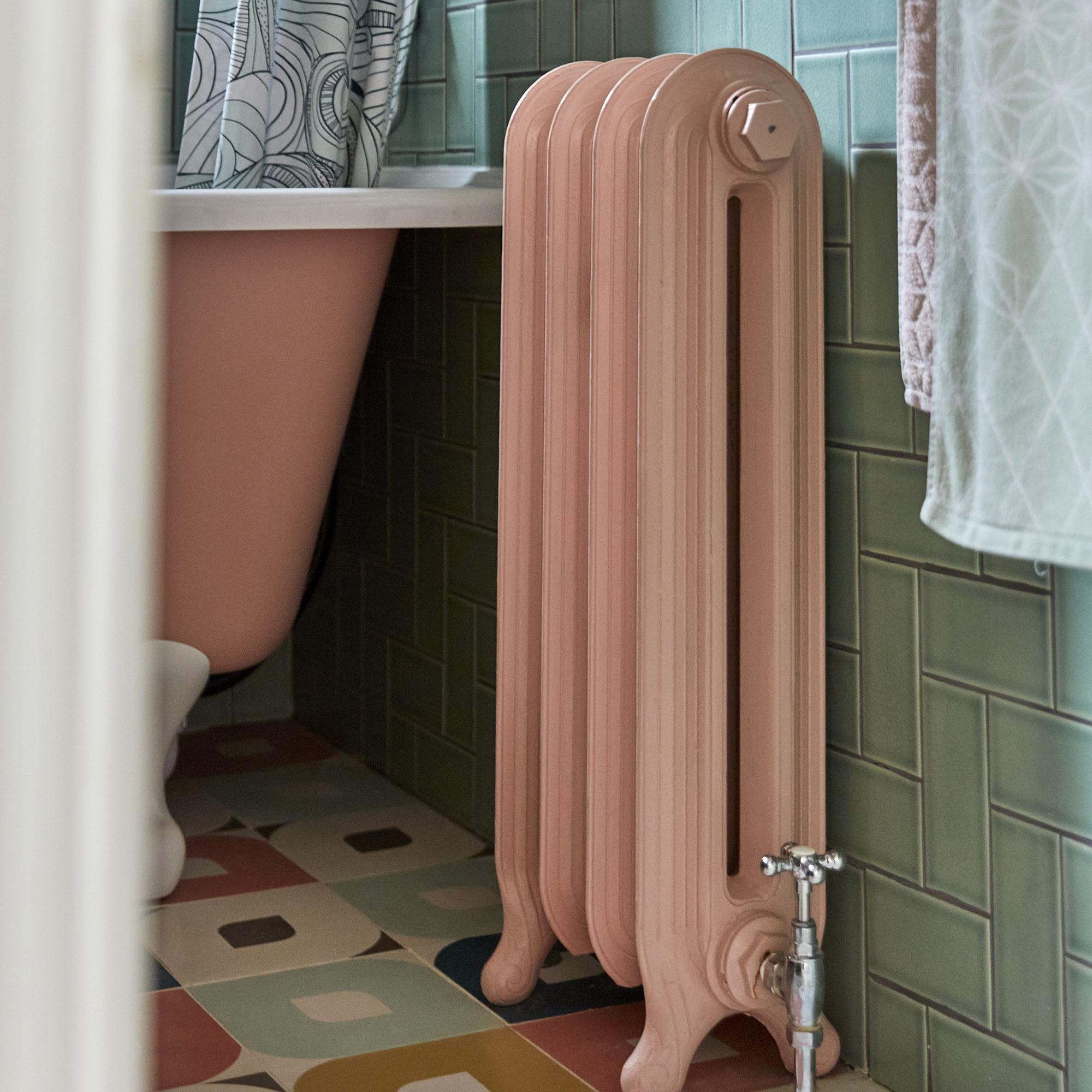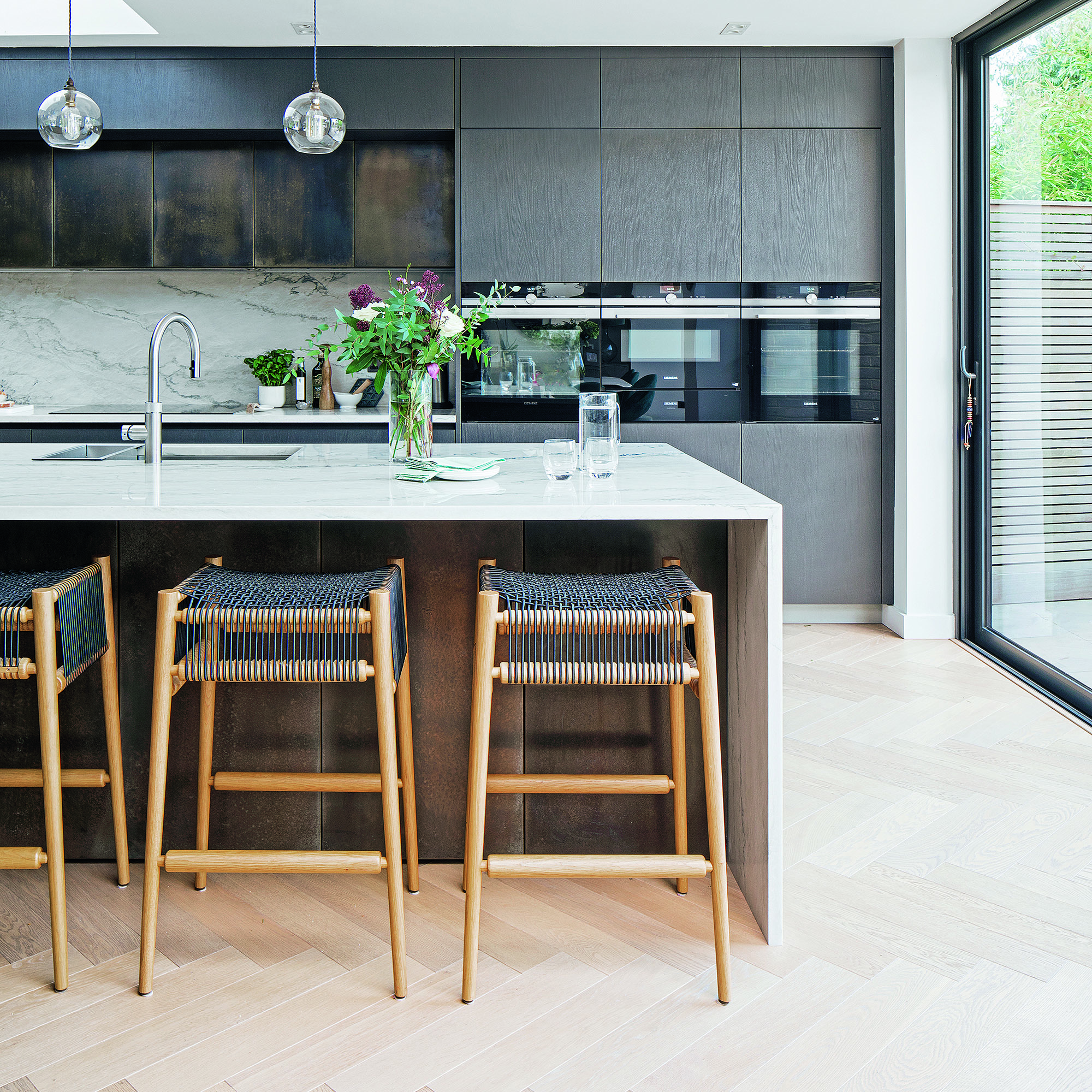Underfloor heating vs radiators – which is the best option for your home?
Find the right heating system for your home, considering efficiency, installation and running costs

Holly Cockburn

Radiators have been the go-to choice for heating our homes for decades. However, in recent years, we've seen underfloor heating rise through the ranks as a popular option, resulting in some stiff competition. This poses the question of underfloor heating vs radiators - which is better? Which is more affordable? And which option will make our lives easier and homes warmer?
In the battle between underfloor heating and radiators, there are a number of important considerations to make. Cost is the most notable factor, but the ease of installation, design practicalities and upkeep all factor into the decision-making. Plus, it's important to understand that there is no 'one size fits all' approach - what is right for you might not be best for another home.
'There’s a whole raft of benefits that come with switching to a correctly specified UFH system,' says Tom Edmunds, general manager at Wunda. 'A major benefit and deciding factor in switching is efficiency which, in turn, leads to cost-savings.'
Underfloor heating vs radiators – which is better?

Here, we break down what you need to know when it comes to updating your heating system: should you choose underfloor heating or radiators?
What is underfloor heating?
This type of heating transforms your home’s floors into a radiant heat emitter. There are two types of underfloor heating: water-based (hydronic) and electric underfloor heating systems. A warm water system features a network of tubes laid beneath the floor surface. When the heating is switched on, warm water circulates through the pipes to warm the floor above.
Electric underfloor heating, like those available from The Underfloor Heating Store, runs off your home’s domestic electricity supply. Heated cables, either in loose wire form or embedded into a mat, are laid beneath the flooring. When switched on, the wires warm the floor above.
If this sounds good to you, make sure you understand the pros and cons of underfloor heating before you commit.
Sign up to our newsletter for style inspiration, real homes, project and garden advice and shopping know-how
What is a radiator?
Typically made from cast iron, steel or aluminium, most modern radiators for central heating comprise two panels, connected by a top grille and side panels. Convector fins are fitted between the two layers, creating a flow of air that spreads heat throughout the room.
'This type of emitter warms the air surrounding it via convection,' says Sarah Wazir, a marketing executive at Warmup. 'The air that is heated by the radiator ascends towards the ceiling. Once the air has cooled, it travels back down to be reheated by the convection of the radiator. This creates a flow of warm and cool air around the room.'
Underfloor heating or radiators: how they match up

Initial installation
Installing a new radiator is straightforward, as it simply needs to be fitted to the wall. If you’re switching existing units for like-for-like replacements, the job shouldn’t take a professional more than a couple of hours. Plus, once all the connections are secure, your new radiator is ready to go.
If you’re fitting completely different units (e.g. a vertical unit instead of a conventional horizontal design), extra thought may be required in terms of planning the room layout around the position of your radiator and ensuring it’s in the best spot to warm the space.
Fitting underfloor heating can be trickier, depending on the scenario. 'In a new build, installing underfloor heating is relatively straightforward, as it can be added before the final flooring or screed level goes in,' says Nick Duggan, director at The Radiator Centre. 'However, if you're retrofitting underfloor heating to an existing floor can prove costly, messy and time consuming as you might need to dig up the floor.'
Electric UFH systems are easier to install than water-based setups – a competent DIYer could probably do it in some scenarios. With a water-based setup, you’ll need to allow enough space for the pipework to be installed without too great a height build-up. Various slim, low-profile hydronic systems are available for retrofit scenarios.
However, the subfloor will still need to be adequately prepared. In some cases, you might be waiting weeks for the screed layer to dry out before you can lay the floor finish over the top. At that point, the underfloor heating should only be turned on gradually and the temperature increased incrementally so that the flooring above can acclimatise.
- The verdict: Radiators have the edge when it comes to the speed and ease of installation.
Efficiency


Peter Clayton, Managing Director of Trade Plumbing Ltd, has worked in the plumbing and heating industry for over 20 years. Throughout Peter's career in this industry, he has developed a wide knowledge of plumbing systems and heating solutions. Peter enjoys sharing this knowledge with readers to help assist their heating needs and provide energy-efficient solutions.
When comparing the efficiency of radiators to underfloor heating, there’s a couple of key factors to note. One is that underfloor heating works at a lower flow temperature (around 35°C) than radiators (70°C -90°C). 'This means that underfloor heating systems can run from an existing boiler and you will make savings due to the low temperature of water required,' says Tom Edmunds from Wunda.
If you’re pairing your underfloor heating with a heat pump (which also works most efficiently at a low flow temperature, ideally suited for UFH), you’ll boost how efficient your underfloor heating system is even more.
'The way the heat is distributed by the emitter also impacts your system’s efficiency and comfort,' says Sarah Wazir from Warmup. 'Radiant warmth [ie from UFH] heats objects directly and maintains the natural humidity in the room, providing an even spread of heat. Conventional heating [ie radiators], on the other hand, warm one area initially and then takes time to circulate so the temperature reaches the desired level.'
Another important factor to bear in mind here is the thermal performance of the building fabric. If precious heat is leaking out via uninsulated walls, floors and roof, it won’t matter whether that heat was generated by radiators or UFH.
'Underfloor heating systems are a much more energy-efficient option, in fact, they use up to 40% less energy than radiators,' adds Peter Clayton from Trade Plumbing. 'Not only will this save you a tremendous amount on household bills but it is much better for the environment as well. Plus heat from underfloor heating is distributed evenly across a room which prevents the creation of cold spots, making your space feel warmer.'
- The verdict: If your home is well-insulated, underfloor heating (especially when paired with a heat pump) is the most efficient option. Thanks to its lower flow temperature and even spread of warmth.
Running costs
The amount you spend on utility bills per month all comes down to efficiency, which means it’s just as much about the thermal performance of your home as it is about the type of heating system you’re using.
Nu-Heat suggests that running costs for radiators and underfloor heating are generally comparable. Though UFH systems that run at a higher level of efficiency could be more than 25% efficient than radiators. This, of course, means energy (and money!) savings.
Your monthly outgoings for UFH depend on the type of system you install. While water-based systems cost more than electric UFH for the initial installation, electric systems come with much higher running costs. The same goes for electric radiators compared to those fuelled by a gas boiler – this is simply because the cost of electricity per unit is greater than the cost of gas. For more information about electric underfloor heating, head to our guide to all the pros and cons.
- The verdict: The initial installation cost of underfloor heating is likely to cost more, long-term savings can be achieved if your system is efficient. The best savings will be made if you install a water-based system in a well-insulated home. Check out our guide to UFH and running costs for more details.
Life span
Robust and reliable, a radiator should provide a service life of at least eight to 10 years. High-quality, well-maintained units might not even need to be replaced for 15+ years. However, frequent use will result in wear and tear, and over time your radiator might fail to perform to its most efficient level. Flushing your system regularly can help prevent build-up of substances like rust.
The pipework for a water-based underfloor heating system should last at least 50 years. Providing the setup is well-maintained and undergoes regular professional servicing to ensure everything is in order.
- The verdict: Though it seems there’s a clear winner here, maintenance is a key issue to think about when it comes to lifespan. 'Once UFH is installed, if it goes wrong it can cause significant upheaval with floors, and it may prove problematic to fix,' says Nigh. 'Radiators are more easily accessible to chance, upgrade and fix in the event of something going wrong.'
Underfloor heating vs radiators: which is best for my home?

Ask yourself the following questions:
Is your home thermally efficient?
If your home is leaking heat via the building fabric because there’s not enough insulation, it doesn’t matter whether you have underfloor heating or radiators – you’ll be wasting energy, and therefore money.
If you’re planning to upgrade your heating system as part of a renovation, it’s always worth taking the opportunity to see if there is any way to boost your home’s thermal performance by packing more insulation into the walls, roof or floors.
Could you benefit from having both UFH and radiators?
Don’t feel that because you want to install underfloor heating in your new kitchen-diner extension and bathroom, it means you need to lay it throughout the rest of the house. In fact, a hybrid setup can work extremely well and be economical because it’s tailored to your lifestyle.
For example, the radiant heat provided by UFH is perfect for living areas where you spend a lot of time. In areas like bedrooms, you could install radiators to provide a 45-minute blast of heat before bed.
Do you have allergies?
Underfloor heating provides radiant heat, which keeps the movement of dust around the room to a minimum. On the other hand, radiators use convection to circulate heat around the room, often moving dust particles at the same time. Minimising the movement of dust and allergens throughout the home can be a major benefit if you suffer from any allergies or asthma.
Underfloor heating vs radiators: the final verdict

If you own a modern, well-insulated home, underfloor heating might just have the edge when it comes to efficiency. However, if you live in an older, draughtier house, the higher output temperature of a radiator system might be the best fit. Either way, running costs will depend largely on how well-insulated your home is.
Your lifestyle also plays an important role in determining which heating solution is best. For tailored guidance, always consult a professional heating engineer who can help you craft a bespoke setup based on the unique quirks of your property.
Can underfloor heating replace radiators?
Underfloor heating can definitely be used as a replacement for radiators, but the choice really is dependent on your home and your own personal needs.
'It’s important to remember that underfloor heating and radiators each have their own advantages and are better suited to different scenarios. Underfloor heating offers consistent, floor-to-ceiling warmth and can be highly efficient when coupled with the right boiler. Radiators offer quick heating and are compatible with various boiler types,' advises Nicholas Gillanders, CEO at South Coast Insulation Services (SCIS).
'The choice between underfloor heating and radiators should be based on your specific heating system, insulation, and heating requirements. It’s worth consulting with heating and energy efficiency professionals to determine the most energy-efficient and cost-effective upgrades and solutions for your unique circumstances.'
Can underfloor heating pipes freeze?
Freezing pipes can be one of the biggest bugbears in winter. At a time when you need hot water and central heating the most, you're left with frozen pipes that lead to maintenance expenses.
When operational, underfloor heating is kept at a consistent low level temperature which means that the pipes shouldn't freeze. This tends to only happen when the heating is left off and it gets extremely cold, so it isn't a problem you're likely to face with underfloor heating.
However, there's a portion of time between installation and the pipes getting fully up and running where this could occur. So it's best to be cautious and opt for installation in a warmer period.
No matter which heating option you choose, it's important to carefully consider your individual needs as a household to determine which works best in terms of cost, ease of use, and maintenance. After all, it's an investment

Rebecca Foster started her journalism career in Bangkok in 2013, where she worked on the in-house editorial team at a luxury homes magazine. Since then, Rebecca has contributed to numerous property and interiors titles in the UK and Southeast Asia. She re-located to London in 2015 to work at one of the country’s leading self-build and home renovation magazines. In 2017, she left her job to split her time between freelance journalism and teaching yoga.
- Holly CockburnContent Editor